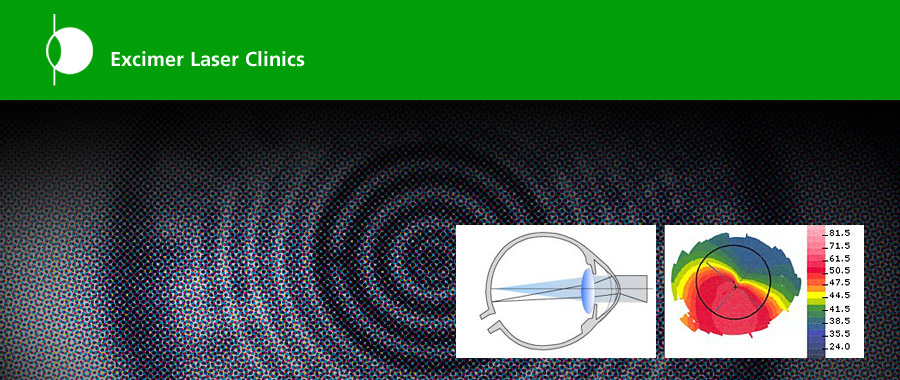


Keratoconus
The term »Keratoconus« comes from the two Greek words »kerato« which means »cornea« and »conus« which means »conical«. An affected person's site can be strongly limited as the cornea begins to bulge into a cone-like shape due to increased internal pressure in the eye and a partial dilution of the cornea.
Doctors have been aware of this disease since the middle of the previous century. However, it's causes have not been understood until today.
This visual disorder, which is not easily detected in the early stages, has been treated in different ways over the years. Eyeglasses typically provided improvement during the early stages. In later stages, special contacts are used. During advanced stages, a cornea transplant may be the final alternative.
Discussions surrounding the treatment of Keratoconus by means of a laser have been controversial. In advanced cases the laser therapy is not recommended, since the diluted and curved cornea should not be further removed. In some advanced cases, plastic rings are sometimes implanted in the cornea using the ICR method, which greatly prevents further deterioration.
In the earlier stages of Keratoconus, a laser treatment (PRK, not LASIK) can prevent or retard an imminent transplant. This however depends on the type of Keratoconus and its intensity. New international studies have successfully tested the procedure, and in proven cases they have endorsed the laser therapy in connection with this eye disease.
The term »Keratoconus« comes from the two Greek words »kerato« which means »cornea« and »conus« which means »conical«. An affected person's site can be strongly limited as the cornea begins to bulge into a cone-like shape due to increased internal pressure in the eye and a partial dilution of the cornea.
Doctors have been aware of this disease since the middle of the previous century. However, it's causes have not been understood until today.
This visual disorder, which is not easily detected in the early stages, has been treated in different ways over the years. Eyeglasses typically provided improvement during the early stages. In later stages, special contacts are used. During advanced stages, a cornea transplant may be the final alternative.
Discussions surrounding the treatment of Keratoconus by means of a laser have been controversial. In advanced cases the laser therapy is not recommended, since the diluted and curved cornea should not be further removed. In some advanced cases, plastic rings are sometimes implanted in the cornea using the ICR method, which greatly prevents further deterioration.
In the earlier stages of Keratoconus, a laser treatment (PRK, not LASIK) can prevent or retard an imminent transplant. This however depends on the type of Keratoconus and its intensity. New international studies have successfully tested the procedure, and in proven cases they have endorsed the laser therapy in connection with this eye disease.